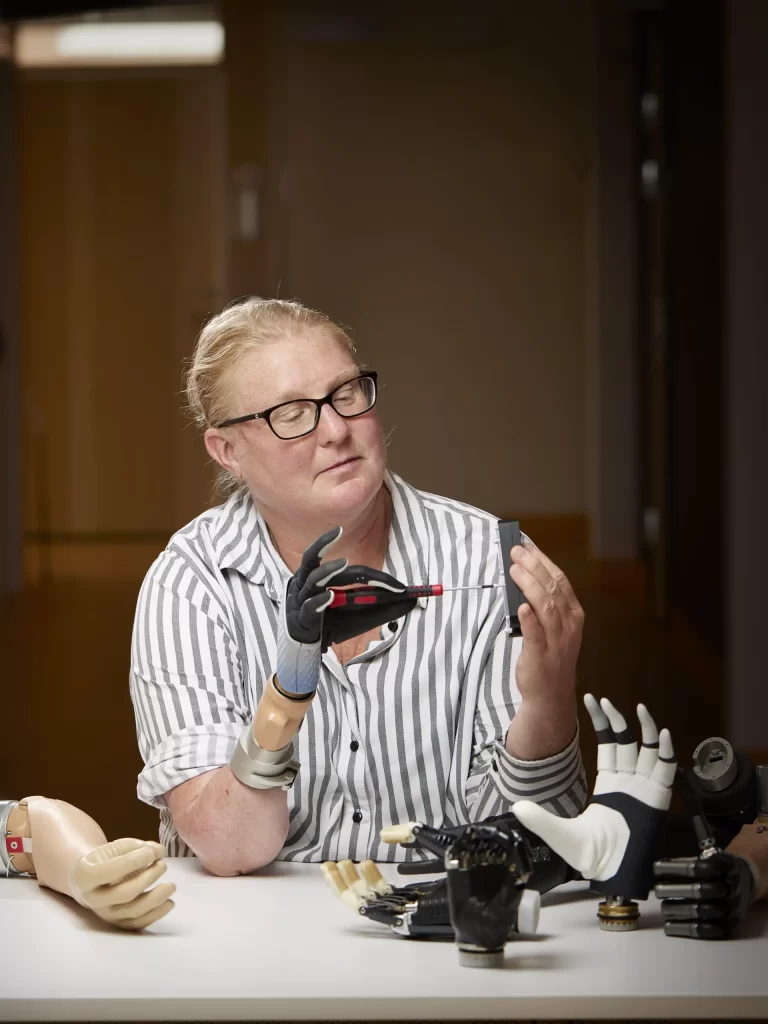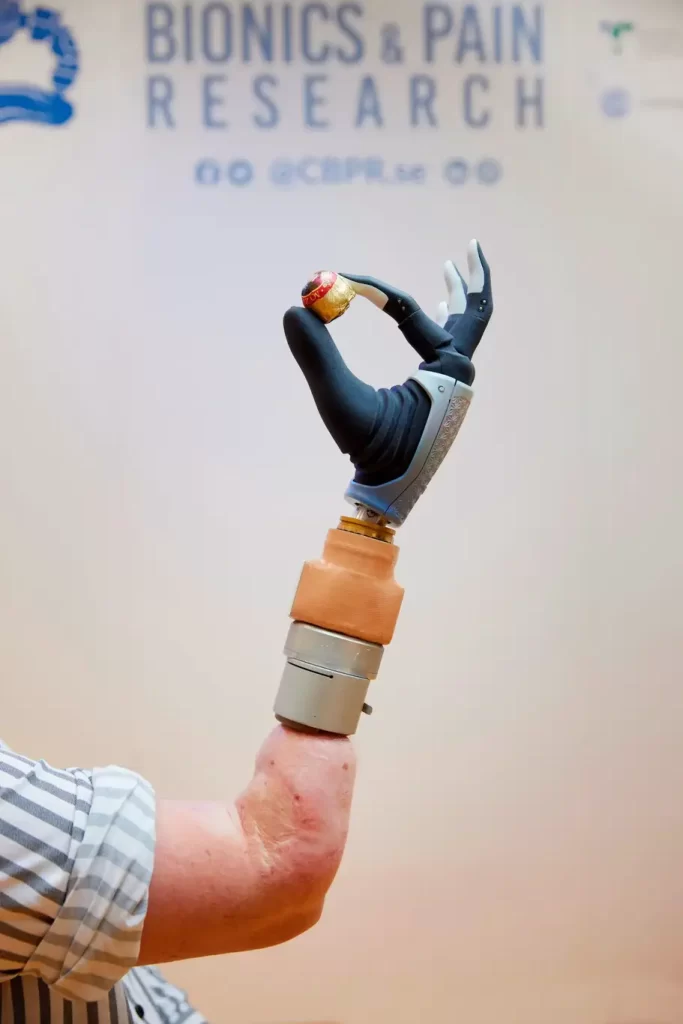Bionic Breakthrough: Revolutionary Prosthetic Technology Relieves Pain and Enhances Functionality for Amputees
Karin, a Swedish woman who lost her right hand in a farming accident over 20 years ago, faced excruciating phantom limb pain and found traditional prostheses uncomfortable and unreliable. However, a groundbreaking bionic technology emerged, integrating with her remaining limb to provide a more functional and comfortable prosthesis. This innovation significantly reduced her pain and enhanced her daily life.
The human-machine interface, developed by a multidisciplinary team led by Prof. Max Ortiz Catalan, involves connecting the prosthesis to the user’s skeleton via osseointegration and linking it electrically to the nervous system through implanted electrodes in nerves and muscles. This integration allowed Karin to control the bionic hand effectively, decreasing her pain significantly and lessening her reliance on medication.
The technology, part of the DeTOP project funded by the European Commission, combines state-of-the-art prosthetic and robotic technologies, such as the Mia Hand developed by Prensilia, which enabled Karin to perform 80% of daily activities. The success of this highly integrated bionic hand in reducing pain and enhancing functionality at Karin’s level of amputation signifies a major breakthrough in advanced extremity reconstructions, giving hope to those facing limb loss.


The innovative aspect of this bionic technology lies in its fusion with the user’s biological system, offering a more comfortable, reliable, and aesthetically customizable prosthesis. The approach, combining surgical expertise, engineering, and osseointegration, has opened new possibilities for restoring human function in a way never seen before. The collaboration between institutions and their cutting-edge technologies signifies a major step forward in improving the lives of individuals with limb loss.
Interested in learning more? Head over to Science Robotics to read the research paper.
Source: SciTechDaily
Additional Insights
Surgical advancements like the one discussed above, particularly involving bionic technology and osseointegration, often imply a confluence of factors related to their affordability and accessibility in advanced countries.
Cost Implications
Surgeries that incorporate cutting-edge technology and interdisciplinary expertise can be expensive. In advanced countries, while some of these procedures may be covered by health insurance, others might not be fully covered, potentially leading to high out-of-pocket costs for patients. The cost of such advanced surgeries can limit their accessibility to a broader population.
Specialized Healthcare Facilities
Advanced surgeries such as those involving bionic technology often require specialized healthcare facilities, skilled surgeons, and access to state-of-the-art equipment. These might be available in specialized medical centers or research institutions within advanced countries. The concentration of such expertise and resources may limit the geographic reach of these procedures, potentially restricting accessibility to patients who live far from these specialized centers.
Research and Development
The development of innovative prosthetic technologies, such as the bionic hand mentioned in the text, involves significant research and development efforts. While these advancements may initially be available in leading research institutions within advanced countries, their broader integration into mainstream healthcare might take time. This gradual integration could affect their immediate availability to a wider population.
Healthcare Disparities
Affordability and accessibility to such advanced surgeries could potentially exacerbate healthcare disparities. While these advancements may be accessible to some individuals with the means or specific healthcare coverage, others, due to financial constraints or lack of access to specialized facilities, might face challenges in benefiting from these cutting-edge solutions.
In summary, while advanced countries may be at the forefront of medical innovations, the affordability and reach of surgeries like the one described above can vary. Factors such as cost, the concentration of specialized facilities, ongoing research, and healthcare disparities can all influence the broader accessibility of these groundbreaking procedures to a wider population.
This blog was written mostly using chatGPT, a potential tool for increased accessibility. Do you think this is an appropriate use of chatGPT? Why or why not? Let me know!


Leave a comment